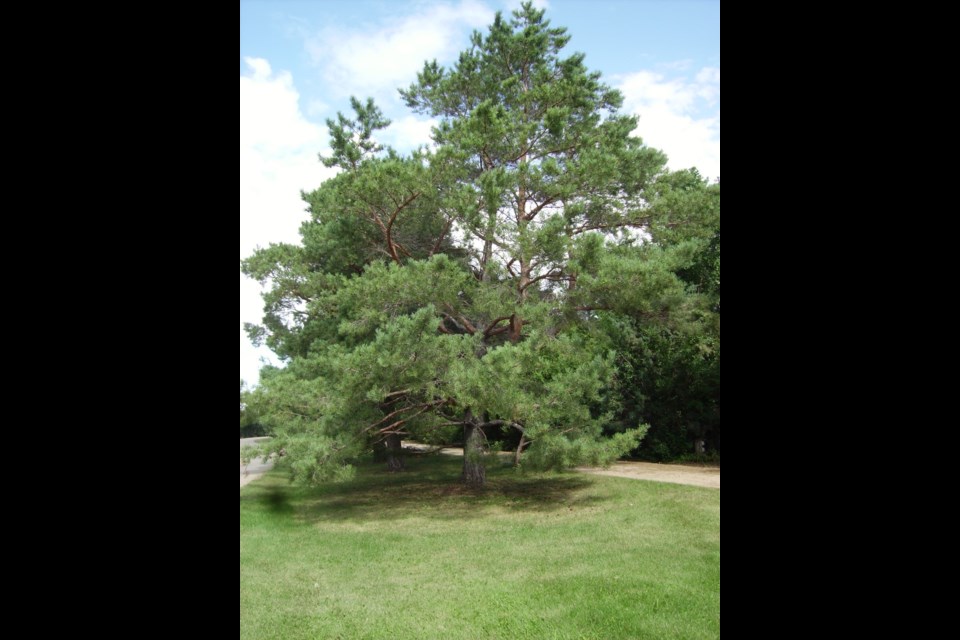I am a tree lover – totally and with no embarrassment or shame. And among my very favourites is Scots pine (Pinus sylvestris). Pines do better than conifers on the prairies simply because of the deep tap root that allows them to “tap” water and nutrients from a deeper soil level in times of drought. And Scots pine is one of the toughest. As well, it’s both fast-growing and long-lived. A wonderful landscape tree, it has also been used extensively as a Christmas tree and grown in the Prairie Farm Rehabilitation Administration nurseries for distribution to prairie farm shelterbelts.
Pinus is the Latin name for pine while sylvestris means “of the forest.” Its wood was once widely used for the masts of sailing ships because its resin slowed decay.
A remote woodland in the northwest highlands of Scotland is home to a stand of ancient pine trees, some dated to 560 years old.
However, the term “Scots” is somewhat misleading as this species has a large native range extending from Spain north to Scandinavia and east into Siberia. Most of the trees grown by the PFRA nurseries originated from seed of Siberian origin to ensure their hardiness on the prairies. It was also found that the seed from northern European sources produced taller straighter trees than those from the south.
Large coniferous evergreen trees grow from 15-30 m (50 to 100 ft) high with a spread of 6-8 m (20-25 ft). Give them the space they need! They perform best in full sun. Although adaptable, they do better on well-drained soils.
Scots pine appear very symmetrical with a pyramidal shape when young, but may assume a more open, rounded and irregular form as they mature. Their bark is an outstanding foxy orange to reddish brown, becoming rougher and more fissured with age. The bark alone would make me love this tree!
The needles, in bundles of two, are sharply pointed, blue-green, stiff and slightly twisted, often becoming yellow-green by late winter. The cones point backwards toward the trunk in clusters of two or three. Retained for two years before falling, they have no prickles on their scales but are rock hard and exceedingly tough on lawn-mower blades. (A good reason to apply mulch below these conifers!) But squirrels appear to have little difficulty in gnawing through them to extract the seeds.
During the dark days of the winter solstice, the Druids of northern Scotland, whose traditions date back to the fourth century BC, performed a ritual known as “turning back the sun.” An oak log and a Scots pine would be burned in an enormous bonfire to return power to the sun. It was also believed that the pine's sweet-scented resin and needles would protect people from evil during those dark winter days.
Pine needles and buds were once used to treat conditions such as asthma, bronchitis and pneumonia. They also served as an antiseptic, applied to cuts and wounds, skin diseases and skin irritations. Bathing in pine needles was thought to help with insomnia and anxiety while stuffing a pillow full of needles was believed to cure a cough. As well, people at one time carried pine cones with them to increase fertility.
This column is provided courtesy of the Saskatchewan Perennial Society (SPS; [email protected]). Check our website (www.saskperennial.ca) or Facebook page (www.facebook.com/saskperennial) for a list of upcoming gardening events.




